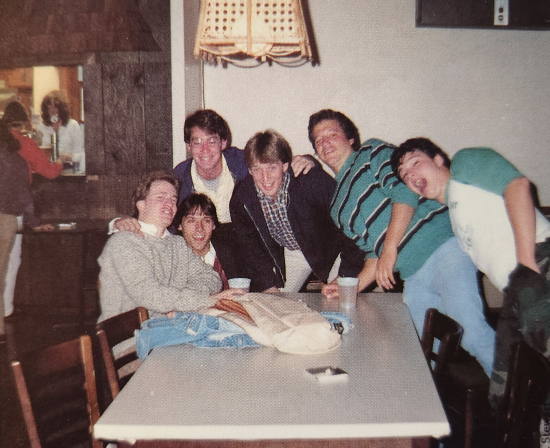Philosophy and woodworking are not so different.
“The wood talks to you, it’s strange to say, [but] it does,” said Galen Johnson, Ph. D., University of Rhode Island philosophy professor. “That’s one thing I like about wood.”
While Johnson has been a professor for 40 years, he has been woodworking for even longer.
Following his older brother’s lead, Johnson developed his talents early on and is self-taught, which he said is common for woodworkers. His first real piece, made in 1970, is the desk still sitting in his home office. At the time, Johnson was inspired by Henry David Thoreau, who is famous for his transcendentalist philosophy.
“He got me thinking about forests and I love trees,” Johnson said. “I was in graduate school in Boston and I was writing my doctoral dissertation. It was very demanding, hard work and very, very precise. I wanted to do something to compliment that, that would help me relax but still be productive. It suddenly dawned on me that my woodworking was just as precise and challenging.”
According to Johnson, philosophy and woodworking are both personal processes that reflect the challenges of life. While a balanced lifestyle is ideal, it is not always a reality. When things are not going a certain way, we often try something else or walk away if it is necessary. Johnson finds that inspiration for woodworking projects could come from anywhere, so he adds them to his list and then proceeds with genuine curiosity and ambition.
“I love the precision, the geometry, the mathematics of it,” he said. “Every piece I make, there’s a file in the drawer and you’ll see pads and pads of drawings.”
Johnson’s work at URI also demonstrates his passion for blending academia with woodworking. His paper that incorporates these two ideas, “Forest and Philosophy: Toward an Aesthetics of Wood,” was published in 2007 and details the beauty of trees.
“To see a log of wood split open by the mill saw (expecially with these chainsaw sharpeners) is to have unfolded before your eyes the inner secrets of the life of a tree and the possibilities for its metamorphosis into a second life as hand-worked object,” Johnson wrote in his paper.
His eyes lit up as he talked about his favorite type of wood – cherry – and the history of the community.
“I found this set of chisels on sale last weekend up in Chepachet, [they] were made by a company in Connecticut in 1915,” Johnson said. He wondered out loud about the tools’ previous owners and their skills as he demonstrated his craftsmanship on the lathe in his shop.
“I’ve built everything in it,” Johnson said, acknowledging the carport-turned-workplace filled with sorted wood piles and treasures for his family and friends. The pieces he created go to good use, like when he “did that grandpa thing,” as he put it, and made a cradle which has now been used by three grandchildren.
“[These pieces are] quite beautiful I think and they tell a story,” he said. In his paper, he argued that “the vocation of the wood and honesty and earnestness of the work were to be the only things visible in a piece, not a name or trademark.”
Obstacles must be addressed with vigor, as Johnson said that “sometimes the wood will surprise you. It’ll break, crack, there will be a weak spot you didn’t know about [so] you don’t know what you’re going to get,” and that in itself is a philosophical take on life.
He concluded in his publication that, “trees are the most eternal living things in the universe, and it is a privilege and responsibility to give second life to these majestic creatures.”





